

Is your Google Classroom a mess? An organizational disaster? Use these five strategies to get a handle on it!
Let’s be honest. Your Google Classroom is a hot mess.
If it is, you’re like many, many other teachers.
(If it’s not a hot mess, kudos to you. We can learn something from you!)
Thankfully, Google Classroom has a feature that helps you keep your classwork page neat and tidy and orderly — topics!
Some of the basics to know about topics:
Of course, how you use topics on your Google Classroom classwork page will dictate how effective and efficient they are for you.
Here are five strategies that can help make the most of Google Classroom:
Certain parts of your LMS are very visible to your students. These parts are often at the top of the page or in a place where students often look. I call these places “prime real estate.” They’re in an important, helpful spot. We should make the most of our prime real estate and make it work for us!
Some examples of prime real estate include a class banner image, the top of your classwork/assignments page, and the titles of your assignments.
That's just scratching the surface, and depending on your particular LMS, you may find that students' eyes are often on certain areas. Maximize them!
For example, here's how to maximize the banner image (first thing students see when they enter your classroom):

The short how-to tutorials on Google Classroom are EVERYWHERE. But how do we teach well with it? In this book, you'll find practical ideas to do great teaching with Google Classroom and thrive.
Number your assignments so that they are easy for you and your students to find. Google Drive automatically creates a folder for your Google Classroom templates and the work created there so having assignments numbered will really help you when searching for or organizing assignments.
If your classwork page were a filing cabinet filled with folders, what would you put on those tabs?
There’s a variety of structures you can use. And thankfully, you can change your mind. Topics are so easy to change. Topics are so easy to rename, add and delete. In a matter of minutes, you can switch to a brand new organizational structure if one isn’t working for you.
Here are some examples of structures you could use:
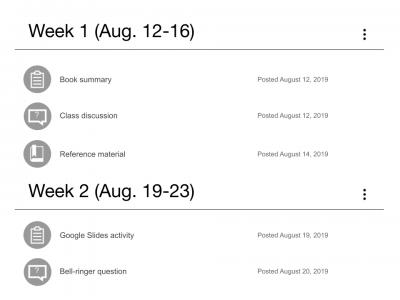
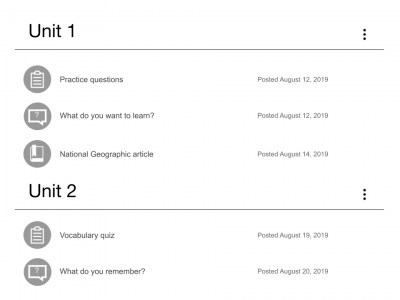
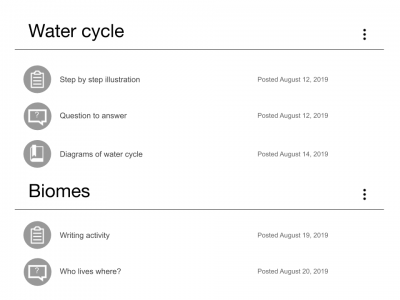
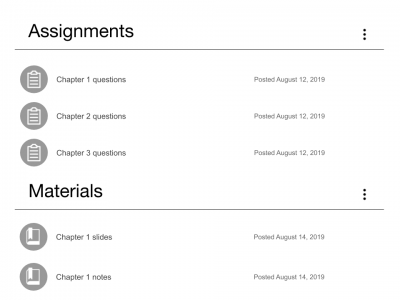
Of course, any of these can be modified. But having some suggestions can help you figure out which fits you best — or at least which one you want to try first.
If you’re a super organizer (or an aspiring super organizer), you may think along these lines …
Organizing by unit sounds great. But each of my units has multiple chapters. And each chapter has multiple lessons. I wish I could organize my Google Classroom like an outline with points and subpoints — and sub-subpoints!
Guess what? You can! We just have to be creative with naming our topics and how we organize them.
For example, your organizational structure can easily go two levels deep — chapters and lessons. Figure out how you’ll type it in the topics so it fits nicely. Then, keep it consistent.
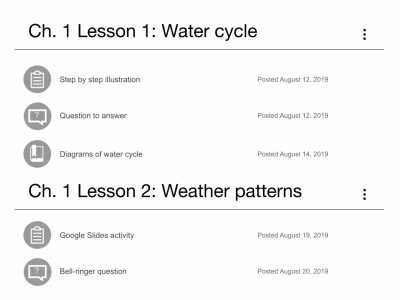
Here, just by typing them in the name, you have a chapter and a lesson.
Consistency keeps it neat! I abbreviated the word “chapter” but spelled out the word lesson. Why? For me, it fit in the space and I thought it looked good that way. However you decide to do it, stay consistent. It’ll make your topics much easier to scan for students. They’ll find what they need faster.
Let’s go crazy — three levels of organization!
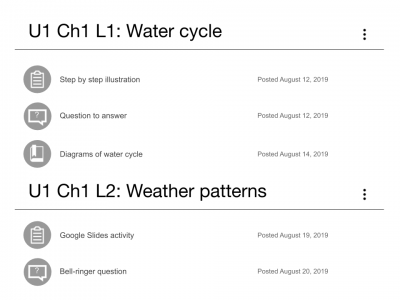
In this case, I abbreviated everything: U1 for unit 1, Ch1 for chapter 1, L1 for lesson 1.
See … you don’t need an official function in Google Classroom for multiple levels of organization. Just make them yourself!
Let’s say your items in the Google Classroom classwork page have different characteristics …
For any of those characteristics, assign an emoji in the name for that characteristic.
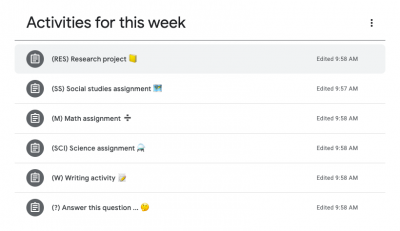
In our examples above, if your assignment includes a video, is a writing assignment and is a social studies activity, you could include one emoji for each of those.
To use this, basically think of what characteristics students might search your classwork for. Adding an emoji lets them find that assignment at a glance.
Don’t want to use emojis? (Or, want to add a second layer of tagging?) Try text-based tags instead! In the image above, I used (RES) for “research project”. Any activity related to the research project could be tagged with that (RES) abbreviation.
Use one of those strategies. Use two or even all three! Then, watch as your Google Classroom falls in line with your organizational hopes and dreams!